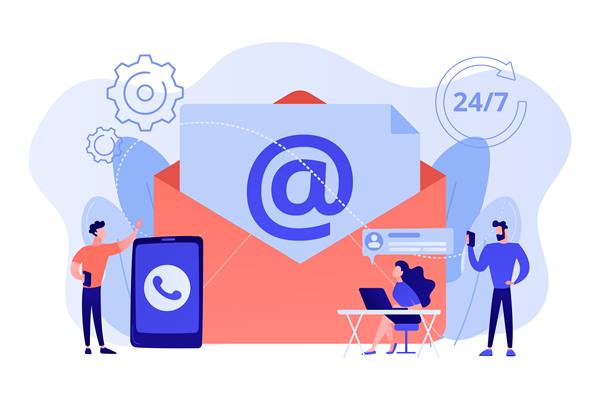
If you’ve ever signed up for a new app or service, you know the feeling of excitement (and maybe a little bit of trepidation) that comes with starting something new. That’s why it’s so important for businesses to have a good onboarding process in place — to help new users feel excited and confident about using the product.
A good onboarding process will teach new users the basic functionality of your product and how to get the most out of it. Onboarding is important because it sets the tone for the user’s future relationship with your product.
The equation is simple: if they have a good experience, they’re more likely to stick around; if they have a bad experience, they’re more likely to churn.
This article discusses a few key things that you should keep in mind when onboarding new users:
Reasons why onboarding users is important
- To live up to the promises: Often the sales teams pitch the solution to potential clients in a glorified manner. They sometimes promise features that do not even exist in the product. Setting the right expectations while onboarding the users is very important so that they do not get frustrated later and churn.
- To reduce support costs: Imagine that the potential customer understands the ins and outs of a product during the onboarding process. This way the customer doesn’t feel the need to contact support whenever they’re stuck, which in turn helps in reducing support costs. The goal should be for the users to know what to expect from the product and how to use it, so that they are less likely to need support.

- To improve user retention: If the users have a good experience using the product from the start, they are less likely to churn. For an improved user retention, remember the first impression is the last impression. Be sure to make that impression worthwhile during onboarding.
- Show a pattern of usage: There might be some uses for the application that users do not know about. It is possible that they purchased your application for feature X, but once they know about feature Y, they will find your application more useful. Showcasing all the important features during onboarding sets a pattern of usage for the customers.
How to onboard users the right way?
Send them a welcome email
The initial welcome email serves two purposes:
- It confirms to the user that they have successfully signed up for your product.
- It explains the value proposition of the tool.
The welcome email should be friendly and helpful, and it should give the user a general overview of what to expect from your product. Read how to best onboard users with email. It explains how to build a meaningful relationship with the users. Welcome emails have a very high open rate so carefully craft the message that you want to get across.
 Get creative while choosing the different types of welcome emails. For instance, Slack adopts the strategy of re-engaging the users. Slack sends out an email saying “See what your team is talking about in Slack”. You’re now curious, aren’t you? You click on the CTA and finish your sign-up process as quickly as possible so that you don’t miss out.
Get creative while choosing the different types of welcome emails. For instance, Slack adopts the strategy of re-engaging the users. Slack sends out an email saying “See what your team is talking about in Slack”. You’re now curious, aren’t you? You click on the CTA and finish your sign-up process as quickly as possible so that you don’t miss out.
Explain the vocabulary
The brand language used in websites and applications is not always familiar to everyone. Explain what each term means and how it is used in the context of your product.
Be sure to explain any jargon or industry-specific language that users might not be familiar with.
The goal of onboarding is not to show off all the features of your product — it’s to introduce users to the basics so they can start using your product with confidence.
Overwhelming users with too much information will only serve to confuse and frustrate them. So take it slow and keep it simple.
If the application is technical, not everyone will understand all the information initially. Instead allow them to learn at their own pace. For this reason, creating demo videos and informational guides, articles and how-tos can help. Customers can have a quick onboarding process and learn important features along the way as needed.
Make it intuitive
Every user is different, which means there is no one-size-fits-all approach to onboarding. Instead of trying to tailor the onboarding experience to each individual user, set up an intuitive interface. Onboarding defines your customer’s experience (Read: 5 customer experience mistakes to avoid).
An intuitive design is one which makes use of content based on user needs.
If the brand has an existing application or interface, the best route is to use it to track user behavior.
- Track existing user’s behavior using an A/B testing tool such as Hotjar or Crazy Egg to analyze how users interact with your product and which areas get the most clicks.
- This will give you an understanding of where users get stuck and what areas need improvement.
- Use data from these applications to design an easy to navigate interface for new users.
- Test different interface designs on small groups of users before rolling out the changes to everyone.
Show them the value
New users need to see why your product is valuable and how it can benefit them in their everyday lives.
If users feel like they’re not getting enough value from the product, the churn rate will be high.
Use your onboarding process as an opportunity to show off your product’s unique selling points and make sure users understand how your product can make their lives easier.
- Make sure to give users positive feedback as they complete each step of the onboarding process.
- The goal is not only to help keep them motivated during the onboarding process, but also let them know that they are doing things correctly.
- During the process, use a progress bar that fills up as the user completes each task. Another is to use positive statements like “Great job!” or “You’re almost there!”
- Avoid using negative language. For example, don’t say “Don’t forget to,” instead say “Remember to.”
- It’s a good idea to end the onboarding process on a positive note. A great way to do this is to show the user what they can do with your product once they’ve completed the onboarding process. Dropbox, for example, does this by showing users how to share files with other people.
Feature Callouts
Your application will have unique features that you want to make sure your users are aware of. These features may be what initially drew them to your product, so it’s important to highlight them during onboarding.
Feature callouts can be done in a number of ways:
- A banner that pops up to introduce the feature.
- Including screenshots and tooltips within the app.
- Sending out weekly emails that focus on a specific feature.
- Sending out notifications (Read: Why it is important to send notifications to your customer)
Feature callouts have the added advantage of making the user walkthrough interactive. This way users are more likely to pay attention to the onboarding process and less likely to get bored.
Final verdict: how important is user onboarding?
By following these tips, you can ensure that your onboarding process is both effective and enjoyable for new users.
If users have made up their mind to purchase or subscribe to your product, chances are that even if you get the onboarding wrong they will still find some way to use your product.
However, if you get it right and make the onboarding experience memorable for users, they will stay with you for the long term.
Customer onboarding is basically holding the hands of customers initially and ensuring they have a great experience.
Set the tone for the user’s future relationship with your product. This makes or breaks whether they stick around long-term. Keep onboarding simple, personalized, and focused on showing users the value of your product, and you’ll be well on your way to keeping those users happy (and engaged).
Remember the ultimate goal of onboarding is to make the users believe that your product is indispensable. Once you keep this customer-centric goal in mind, you’re a step closer to achieving the milestone of customer satisfaction.
About the Author
 Osama Zahid is a technology content strategist who is passionate about content marketing and all things SEO. He has helped various companies rank their content on the first page of search engines. In his free time, Osama loves to play football and travel.
Osama Zahid is a technology content strategist who is passionate about content marketing and all things SEO. He has helped various companies rank their content on the first page of search engines. In his free time, Osama loves to play football and travel.




